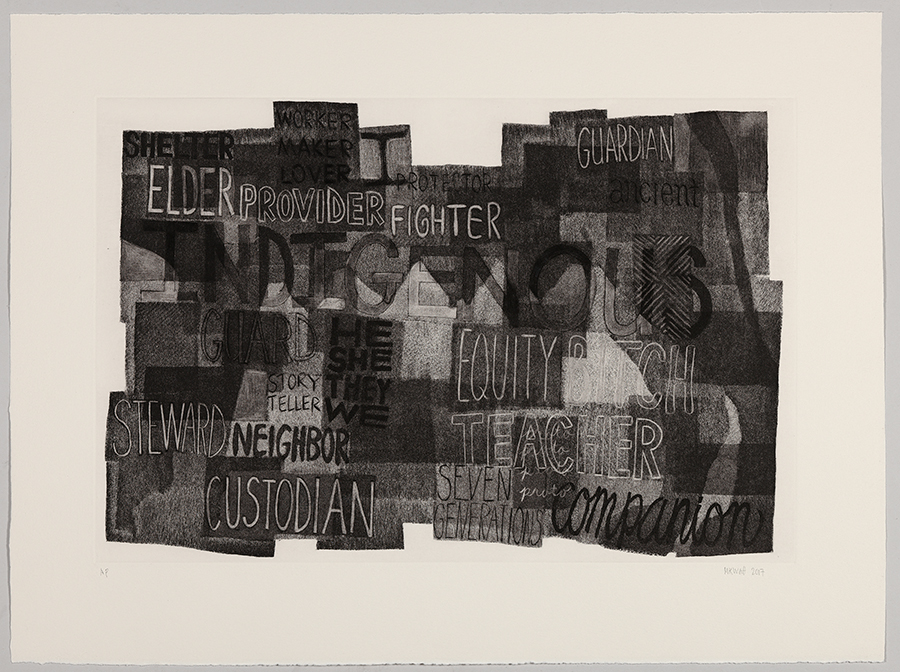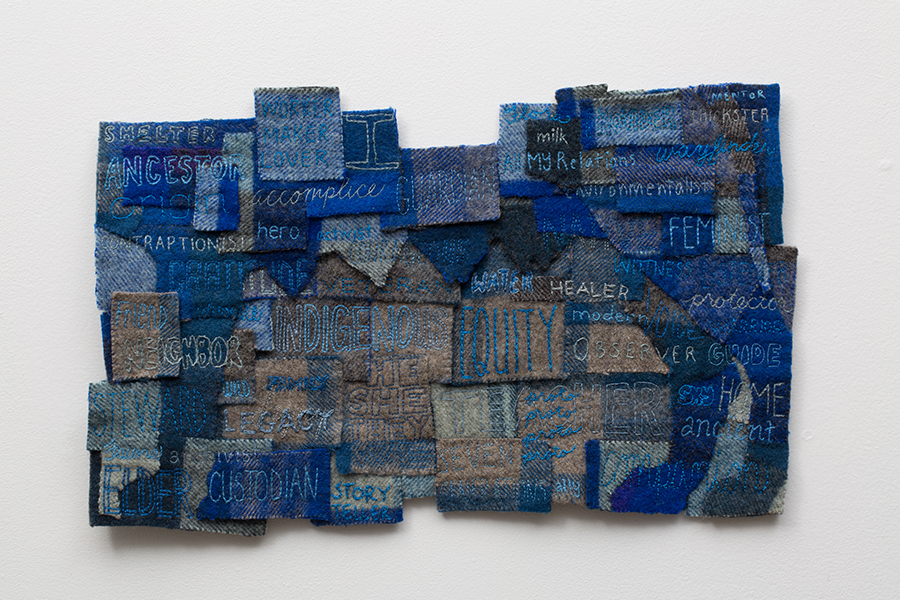
A similar work, pictured immediately above, is sometimes on display instead of the one talked about in the audio. The museum alternates between these two works to help protect them. The works were made at the same time and deal with similar content, such as Native representation and identity. The main difference is the material and the different words.
Maker: Marie Watt
Culture: American, Seneca
Title: Companion Species (fortress)
Date Made: 2017
Type: Textile
Material: Reclaimed wool blanket, thread, embroidery floss (thick shiny thread, used for the words)
Measurements: 11 x 17 in
Transcript:
This piece is by Marie Watt and, in it, she used reclaimed wool blankets to make a larger piece. And so what she did is cut up wool blankets and then she sewed the scraps together to form this piece. And she works a lot with blankets and she talks about how blankets are so comforting and important to us. And we use them, you know, almost every day, but we also take them for granted sometimes. So that’s like a kind of universal way of thinking about blankets. But then specifically thinking about blankets in an indigenous way, we, at least in my family, and I’ve read Marie Watt talk about this in her work, like, we give blankets as an important signifier for significant moments in our lives. And so when I graduated high school I got a blanket. When I turned 21 I got a blanket. When my dad dies he wants to be wrapped in a blanket and tossed in the ground. So they’re, like, they’re pretty important, you know. So it’s cool that she uses those in this piece and in a lot of her other works.
And so after she sewed the blanket scraps together, she embroidered English words over top of them. And all the words relate to how we, as indigenous women, see and describe ourselves but also how we are seen and described by other people. And so some of the words, for example, are “indigenous,” or also “teacher,” “native feminist.” And so they are really beautiful. They work together but they can also stand alone. Also the edges of this work are unfinished which to me suggests that, like, we could add more to this forever and ever and ever because the ways that we see ourselves and others, it doesn’t end, ever. And that also has to do with this idea of continuity and continuance, which she brings up when she writes at the bottom, in the middle, “seven generations.” And the idea of seven generations is a Haudenosaunee or Iriquois concept that says basically everything we do doesn’t only impact us but the next seven generations. And so it’s important for us to think about the future with everything that we do.
